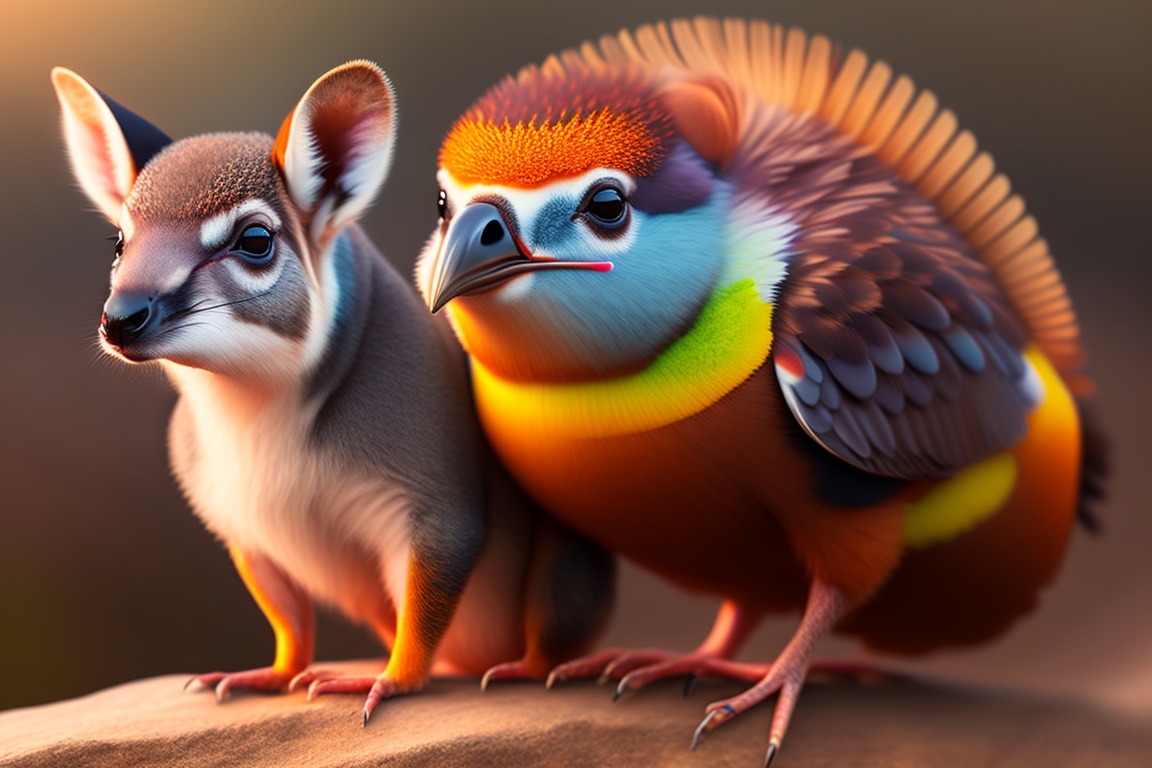Australia is home to many unique and fascinating animal species that have adapted to their diverse habitats over millions of years. From kangaroos and koalas to Tasmanian devils and wombats, these creatures have captured our imaginations and inspired curiosity around the world. In this article, we’ll take a look at some interesting and little-known facts about Australian animals that might surprise you. So read on and discover more about Australia’s amazing wildlife!
Facts About Australian Animals: Learn Fascinating Information About Kangaroos, Koalas, Echidnas, and More! – Twinkl
Marsupials.
- Approximately 90% of the animals native to Australia are found nowhere else in the world.
- The vast majority of Australian animals are marsupials – animals whose young develop in a pouch instead of a placenta.
- Kangaroos, wallabies, possums, koalas, and wombats are all marsupials.
- The red kangaroo is the largest marsupial, and the smallest is the long-tailed planigale1.
- The koala is not a bear, but a marsupial.
Unique Animals.
- Australia is home to the only egg-laying mammals in the world, the amazing echidna and the extraordinarily odd duckbill platypus.
- Bats and dingos are the only placental mammals to have reached Australia on their own.
- The Tasmanian devil is a carnivorous marsupial found only in Tasmania.
- The numbat is a small, insect-eating marsupial that is endangered.
- The bilby is a small marsupial with long ears and a long snout, and is considered an endangered species.
Birds.
- Australia is home to over 800 species of birds, many of which are endemic.
- The emu is the second-largest bird in the world, after the ostrich.
- The kookaburra is a bird known for its distinctive call, which sounds like laughter.
- The lyrebird is known for its ability to mimic sounds, including other birds and even chainsaws.
Reptiles.
- Australia is home to over 800 species of reptiles.
- The saltwater crocodile is the largest reptile in the world, and can be found in Australia’s northern waters.
- The frilled lizard is a unique-looking lizard with a frill around its neck that it uses to intimidate predators.
- The blue-tongued skink is a type of lizard with a bright blue tongue that it uses to scare off predators.
Amphibians.
- Australia is home to over 200 species of frogs.
- The green tree frog is a common species of frog found in Australia.
- The corroboree frog is a small, brightly colored frog that is critically endangered.
Insects.
- Australia is home to over 100,000 species of insects.
- The Christmas beetle is a type of scarab beetle that is known for its bright green color and appearance around Christmas time2.
- The praying mantis is a type of insect that is known for its distinctive posture and predatory behavior.
Ecosystems and Biodiversity.
- Australia has vast expenses of desert and semi-arid land in its interior, sub-tropical rainforest in the Northeast, and grasslands and mountain ranges along the perimeter.
- The Great Barrier Reef, located off the coast of Australia, is the world’s largest coral reef system.
- Australia has a high level of biodiversity, with many unique species of plants and animals.
Habitat and Adaptation.
- Many Australian animals have adapted to the country’s harsh climate and environment.
- The kangaroo’s long, powerful legs are an adaptation that allows it to move quickly across the country’s vast expanses of open land.
- The echidna’s long snout is an adaptation that allows it to find food in the ground.
Role of Conservation Efforts in Protecting Endangered Australian Species.
Conservation efforts play a crucial role in protecting endangered Australian species. The ongoing wildlife decline and growing threatened species list in Australia is a result of inadequate funding for environmental protection and recovery.
The Australian Government is one of the important players in protecting threatened species and achieving sustainable development, with state and territory governments, Indigenous people, communities, organizations, businesses, and individuals also playing a role.
WWF-Australia is working in partnership with Traditional Owners, communities, organizations, businesses, and individuals to protect threatened wildlife, restore their habitats, and turn the tide on the extinction crisis. This work is only possible thanks to the incredible supporters.
Together, we can Regenerate Australia and save our unique wildlife. Saving our wildlife is essential, and there are many threatened wildlife that we’re working to save in Australia and overseas. The Australian Government plays an important role in coordinating national efforts to conserve and protect native plants and animals, but it cannot do it alone.
The government needs the support of the community, industry, and other stakeholders to achieve its goals. The Threatened Species Strategy Action Plan 2021-2026 outlines the government’s approach to threatened species conservation and sets out the priority actions for the next five years.

Conservation efforts in Australia have been successful in saving some species from extinction. New research suggests that 26 Australian species have recovered enough to no longer meet the criteria for listing as threatened under the Environment Protection and Biodiversity Conservation (EPBC) Act. However, more needs to be done to protect Australia’s unique wildlife and ecosystems.
How Australian Animals Adapt to Their Unique Ecosystems and Habitats.
Australian animals have adapted to their unique ecosystems and habitats in various ways. Many Australian animals have adapted to the country’s harsh climate and environment. The kangaroo’s long, powerful legs are an adaptation that allows it to move quickly across the country’s vast expanses of open land. The echidna’s long snout is an adaptation that allows it to find food in the ground.
Australia has vast expenses of desert and semi-arid land in its interior, sub-tropical rainforest in the Northeast, and grasslands and mountain ranges along the perimeter. The Great Barrier Reef, located off the coast of Australia, is the world’s largest coral reef system. Australia has a high level of biodiversity, with many unique species of plants and animals.
Common Predators and Prey of Australian Mammals, Birds, Reptiles, and Amphibians.
Australian mammals, birds, reptiles, and amphibians have various predators and prey. The kangaroo is preyed upon by dingoes, eagles, and humans. The Tasmanian devil is a carnivorous marsupial that preys on small mammals, birds, and reptiles. The saltwater crocodile is the largest reptile in the world and preys on a variety of animals, including fish, birds, and mammals.
Australia is home to over 800 species of birds, many of which are endemic. The kookaburra is a bird known for its distinctive call, which sounds like laughter. The lyrebird is known for its ability to mimic sounds, including other birds and even chainsaws. Australia is home to over 800 species of reptiles.
The frilled lizard is a unique-looking lizard with a frill around its neck that it uses to intimidate predators. Australia is home to over 200 species of frogs. The green tree frog is a common species of frog found in Australia.
How Poaching Affects Conservation Efforts for Endangered Australian Species
Poaching is the illegal hunting, capturing, and often killing of wild animals. Poaching poses a growing threat to elephants, rhinos, and other charismatic animals, as well as to smaller and more obscure creatures, like those found in Australia.
Poaching can be a serious threat to many wild species, particularly those protected in wildlife preserves or national parks. Wildlife crime is one of the largest direct threats to many of the world’s most threatened species, second only to habitat destruction.
Poaching has devastating consequences for wildlife, and it is one of the largest direct threats to many of the world’s most threatened species, including those found in Australia. Poaching can have a detrimental effect on biodiversity both within and outside protected areas as wildlife populations decline, species are depleted locally, and the functionality of ecosystems is disturbed.
Poaching affects conservation efforts for endangered Australian species in several ways. It can lead to the decline of populations of endangered species, which can make it more difficult to recover their populations. Poaching can also lead to the loss of genetic diversity within a population, which can make it more difficult for the population to adapt to changing environmental conditions.
Local communities are often vulnerable to the impacts of poaching as they can be either threatened by the illegal activity or tempted by poverty to become part of it. WWF and partners work with local communities to provide alternative incomes through, for example, tourism opportunities and to assist them to become guardians of the wildlife.
Examples of Unique Adaptations of Australian Mammals, Birds, Reptiles, and Amphibians to Their Respective Ecosystems and Habitats.
Australian animals have unique adaptations to their respective ecosystems and habitats. The kangaroo’s long, powerful legs are an adaptation that allows it to move quickly across the country’s vast expanses of open land.
The echidna’s long snout is an adaptation that allows it to find food in the ground. The frilled lizard is a unique-looking lizard with a frill around its neck that it uses to intimidate predators6. The green tree frog is a common species of frog found in Australia.
Australia has vast expenses of desert and semi-arid land in its interior, sub-tropical rainforest in the Northeast, and grasslands and mountain ranges along the perimeter. The Great Barrier Reef, located off the coast of Australia, is the world’s largest coral reef system. Australia has a high level of biodiversity, with many unique species of plants and animals.
How Predators and Prey Interact in Maintaining the Balance of Australian Ecosystems.
Predators and prey interact in maintaining the balance of Australian ecosystems. The kangaroo is preyed upon by dingoes, eagles, and humans. The Tasmanian devil is a carnivorous marsupial that preys on small mammals, birds, and reptiles.
The saltwater crocodile is the largest reptile in the world and preys on a variety of animals, including fish, birds, and mammals. Predators play an important role in controlling the populations of their prey, which helps to maintain the balance of ecosystems.
Prey animals have evolved various adaptations to avoid being eaten by predators, such as camouflage, speed, and defensive behavior. Australia is home to over 800 species of birds, many of which are endemic. The kookaburra is a bird known for its distinctive call, which sounds like laughter. The lyrebird is known for its ability to mimic sounds, including other birds and even chainsaws.
Australia is home to over 800 species of reptiles. The blue-tongued skink is a type of lizard with a bright blue tongue that it uses to scare off predators. Australia is home to over 200 species of frogs. The corroboree frog is a small, brightly colored frog that is critically endangered.
Most Poached Species in Australia.
Poaching is a serious threat to many wild species, including those found in Australia1. Some of the most poached species in Australia include:
- Saltwater crocodiles: These large reptiles are hunted for their meat and skin, which is used to make leather goods.
- Black cockatoos: These birds are poached for the illegal pet trade.
- Kangaroos: These marsupials are hunted for their meat and skin.
- Sea turtles: These reptiles are hunted for their meat and eggs.
- Sharks: These fish are hunted for their fins, which are used to make shark fin soup.
How Conservationists Work to Prevent Poaching in Australia.
Conservationists work to prevent poaching in Australia in various ways. One of the most effective ways to prevent poaching is to increase public awareness of the issue and the importance of protecting wildlife. Conservationists also work with local communities to provide alternative sources of income, such as ecotourism, to reduce the incentive for poaching.
Conservationists also work with law enforcement agencies to crack down on poaching and the illegal wildlife trade. The Australian Government has implemented a range of measures to combat poaching, including increased penalties for wildlife crimes and increased funding for wildlife protection and conservation.
Conservationists also work to protect the habitats of endangered species, as habitat loss is a major driver of wildlife decline. By protecting habitats, conservationists can help to ensure that endangered species have the resources they need to survive and thrive.
Legal Consequences for Poaching in Australia.
Poaching is a serious crime in Australia, and those caught poaching can face significant legal consequences. The punishment for poaching in Australia varies depending on the severity of the offense and the species involved. Fines for felony poaching range from $10,000 and up to two years in prison.
The Australian Government has implemented a range of measures to combat poaching, including increased penalties for wildlife crimes and increased funding for wildlife protection and conservation. The government also works with law enforcement agencies to crack down on poaching and the illegal wildlife trade.
How Poaching Affects the Ecosystem of Australia.
Poaching can have a significant impact on the ecosystem of Australia. Poaching can lead to the decline of populations of endangered species, which can make it more difficult to recover their populations. Poaching can also lead to the loss of genetic diversity within a population, which can make it more difficult for the population to adapt to changing environmental conditions.
Poaching can also disrupt the balance of ecosystems by removing key species from the food chain. For example, the loss of predators can lead to an increase in the population of their prey, which can in turn lead to a decline in other species that are preyed upon by the same prey animals.
Organizations That Work to Prevent Poaching in Australia
Several organizations work to prevent poaching in Australia, including:
- World Wildlife Fund (WWF): WWF works to protect endangered species and their habitats, and to combat poaching and the illegal wildlife trade.
- International Fund for Animal Welfare (IFAW): IFAW works to protect animals and their habitats, and to combat poaching and the illegal wildlife trade.
- Australian Wildlife Conservancy (AWC): AWC works to protect endangered species and their habitats, and to combat poaching and other threats to wildlife in Australia.
- Wildlife Conservation Society (WCS): WCS works to protect endangered species and their habitats, and to combat poaching and the illegal wildlife trade.
These organizations work with local communities, law enforcement agencies, and governments to protect wildlife and their habitats, and to raise awareness of the importance of conservation and the threats posed by poaching and the illegal wildlife trade.
Fines and Jail Time for Poaching in Australia.
Poaching is a serious crime in Australia, and those caught poaching can face significant legal consequences. The punishment for poaching in Australia varies depending on the severity of the offense and the species involved. Fines for felony poaching range from $10,000 and up to two years in prison.
How Poaching Affects the Population of Australian Wildlife.
Poaching can have a significant impact on the population of Australian wildlife. Poaching can lead to the decline of populations of endangered species, which can make it more difficult to recover their populations. Poaching can also lead to the loss of genetic diversity within a population, which can make it more difficult for the population to adapt to changing environmental conditions.
Poaching can also disrupt the balance of ecosystems by removing key species from the food chain. For example, the loss of predators can lead to an increase in the population of their prey, which can in turn lead to a decline in other species that are preyed upon by the same prey animals.
Specific Examples of Species That Are Poached in Australia.
Some of the most poached species in Australia include3:
- Saltwater crocodiles: These large reptiles are hunted for their meat and skin, which is used to make leather goods.
- Black cockatoos: These birds are poached for the illegal pet trade.
- Kangaroos: These marsupials are hunted for their meat and skin.
- Sea turtles: These reptiles are hunted for their meat and eggs.
- Sharks: These fish are hunted for their fins, which are used to make shark fin soup.
Methods for Preventing Poaching in Australia.
Poaching is a serious threat to many wild species, including those found in Australia1. There are several methods for preventing poaching in Australia, including:
- Public Education: By providing the public with education on the practice and how it is bad for animals, humans, and even economies, we can take meaningful action against poaching. Public education will also go a long way in undermining and dispelling existing myths about the medical, aphrodisiac, and religious uses of animal parts.
- Community-Based Conservation Programs: Community members might opt to increase the number of wildlife scouts at the borders so as to put an end to any hostility between people and animals or limit any retaliatory killings of the local endangered species.

- Law Enforcement: The Australian Government works with law enforcement agencies to crack down on poaching and the illegal wildlife trade. The government has implemented a range of measures to combat poaching, including increased penalties for wildlife crimes and increased funding for wildlife protection and conservation.
- Alternative Incomes: WWF and partners work with local communities to provide alternative incomes through, for example, tourism opportunities and to assist them to become guardians of the wildlife.
Impact of Poaching on the Food Chain in Australian Ecosystems.
Poaching can disrupt the balance of ecosystems by removing key species from the food chain. For example, the loss of predators can lead to an increase in the population of their prey, which can in turn lead to a decline in other species that are preyed upon by the same prey animals.
Economic Factors that Contribute to Poaching in Australia.
Poaching is often driven by economic factors, such as poverty and the demand for animal products1. Some of the economic factors that contribute to poaching in Australia include:
- Demand for Animal Products: The demand for animal products, such as ivory, fur, organs, skin, bones, or teeth, can drive poaching in Australia.
- Poverty: Local communities are often vulnerable to the impacts of poaching as they can be either threatened by the illegal activity or tempted by poverty to become part of it.
- Broken Regulation Systems: Poaching in recent times has increased due to the existence of wildlife protection regulations that can be circumvented. Some government officials have also taken a back seat in tightening poaching rules as they directly benefit from it.
Conclusion.
To conclude, Australia has a rich diversity of incredible and iconic animal species that deserve recognition and protection. Whether they are well known, like the kangaroo and Koala, or lesser-known species such as quokkas and echidnas, each one plays a crucial role in maintaining balance within their respective ecosystems.
As humans, it’s up to us to preserve the habitats of these wonderful creatures by taking steps to reduce pollution, conserve resources and protect natural spaces. After all, by saving them, we save ourselves. Thank you for reading, I hope this article has taught you something new about Australia’s furry (and scaly) friends. I Wrote another article Facts About African Animals which you need to read to understand more.
I am an accomplished author at Fact Finders Company LLC, a renowned publishing house based in New York City. With a passion for research and a talent for writing, I have contributed to numerous non-fiction titles that explore a wide range of topics, from politics and history to science and technology. My work has been widely praised for its accuracy, clarity, and engaging style. Nice Reading here at Fact After Fact.








